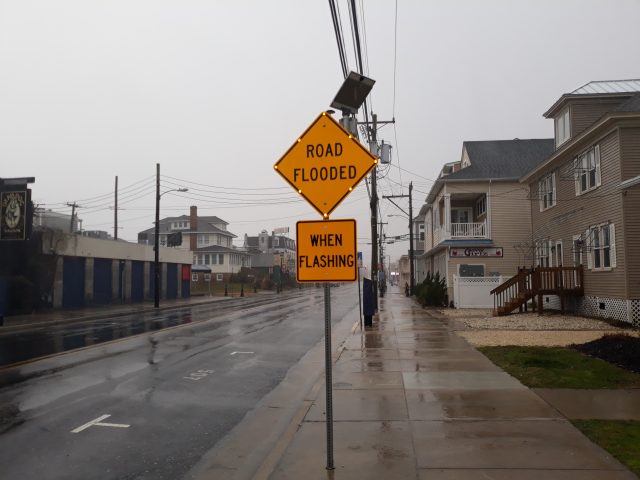By DONALD WITTKOWSKI
Sea Isle City has experienced both disappointment and great success with the federal program that provides flood insurance for homeowners.
Once in danger of being thrown out of the National Flood Insurance Program in 1993, the city has undergone a dramatic transformation since then and was recently ranked as one of the nation’s leading communities in flood prevention.
However, Sea Isle has slipped in the nationwide community ranking system used by the Federal Emergency Management Agency to determine the level of discounts homeowners receive on their flood insurance.
Once considered a “Class 3” community, Sea Isle has dropped down to “Class 4” following the loss of points formerly given out by FEMA for flood-mitigation measures that communities implemented following Hurricane Sandy in 2012. All communities have lost the “Sandy points,” not just Sea Isle, City Solicitor Paul Baldini said.
Baldini explained that the Sandy points were essentially a bonus that helped Sea Isle to achieve Class 3 status. Under the community ranking system used by FEMA, homeowners in towns or cities designated as Class 3 are eligible for 35 percent discounts on their flood insurance.
The Sandy points expired over time, leaving Sea Isle about 200 points short of retaining its Class 3 status, Baldini pointed out.
“We’re in the process of making up those points,” he said.
Now that Sea Isle has dropped down to Class 4 status, homeowners are eligible for a 30 percent discount in their flood insurance.
During a discussion at a City Council meeting Tuesday, city officials predicted that Sea Isle will not only regain its Class 3 status but will also look to eventually move up to Class 2. Under Class 2, homeowners are eligible for 40 percent discounts with their flood insurance.
“I have all the confidence in the world we will regain a 35 percent discount,” Mayor Leonard Desiderio said of Sea Isle climbing back to Class 3.

Over the years, Sea Isle has implemented a series of major flood-mitigation projects, such as restoring the beaches and dunes, building bulkheads along the bayfront, reconstructing the roads, improving the drainage systems and erecting berms, levees and rock walls to block stormwater.
The city has also built a stormwater pumping station in the flood-prone bayfront neighborhood at 38th Street and Sounds Avenue. City officials say more pumping stations will be built to protect low-lying neighborhoods vulnerable to flooding.
At one point in FEMA’s nationwide listings for communities that are part of the National Flood Insurance Program, Sea Isle was the only New Jersey municipality to have achieved a Class 3 ranking and was one of only a few towns across the country to do so.
“We are still recognized across the state as a model community,” Desiderio said.
Desiderio compared Sea Isle’s prestigious Class 3 ranking to the dire days in the early 1990s when the city had a “zero” rating and was on the verge of getting kicked out of the National Flood Insurance Program.
Neil Byrne, who serves as Sea Isle’s floodplain manager and construction officer, said the city has already submitted paperwork to FEMA in hopes of regaining its Class 3 status. FEMA still must review the paperwork.
Byrne noted that the city has already taken or is planning a number of steps to solidify its standing in the National Flood Insurance Program. They include enacting higher flood-elevation standards, rigorous maintenance of the drainage systems and more public outreach programs to educate local homeowners about flood insurance, he said.
In the meantime, only a small number of homeowners are expected to be affected by Sea Isle’s drop from Class 3 to Class 4 status, city officials said.
They stressed that Sea Isle is moving quickly to climb back up to Class 3, so the city should be at the Class 4 level for only a short time.









